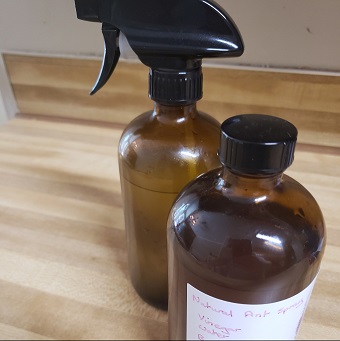
Christmas, in many cultures, would not be Christmas without a jolly, rotund man stopping by with gifts for all the good children of the world. Traditionally, he would leave coal or twigs for the ill-behaved children. In modern times, at least in the western world, he seems to be rather lenient in regards to excitable behavior. In the United States, he is known as Santa Claus. This comes from the Danish name Sinterklaas, likely introduced by immigrants in the 1700s. Sinterklaas is a cultural name used for Saint Nicholas. In Christianity and popular culture, Saint Nicholas is said to be the original Santa Claus, or at least the inspiration for the legend we all know and love today!
So, who is St. Nicholas? Saint Nicholas was a bishop in the early days of Christianity. His parents died when he was young, leaving him with a strong conviction in his faith and a healthy financial inheritance. He was persecuted greatly by the Romans for his faith. He took his faith very seriously, but one lesson in particular. To sell everything he owned and use the proceeds to help the poor. One story tells of a poor widowed father with three daughters. In these times, options for women were very slim. If your father couldn’t afford to put up a substantial dowry, you would be sold into slavery or end up labeled a spinster, which was the least desirable option! Anyway, this man was so poor, he was having to tell his oldest daughter that she would be sold to a slave master as he had nothing to offer as a dowry to a potential suitor and he could not afford her keep himself. It just so happened that the bishop was passing by and overheard the weeping father. He returned that night and tossed a bag of gold into the house, either through the window or down the chimney, I cannot find clarification of that point! What is known, is the bag of gold landed in a sock that was drying by the fire. It’s obvious where the tradition and symbolism came from.
As I was searching on the subject of personifications of Santa around the world, I came upon a very interesting article by Dawn Copeman on Time Travel Britain. I am an English woman living in America for over 10 years now. However, I grew up in England with the stories of Father Christmas. Although the traditional character of Father Christmas has quite a few differences to Santa, I was always led to believe they were essentially the same. Ms Copeman alleges that although the stories are now so intertwined that the two are essentially one and the same, this was not always the case! Since I had never heard of these theories before, I found some other sources, one being Wikipedia, but that was very similar wording. The other is differencebetween.info. This one was interesting because it makes Christian references to the claims which confirmed to me that there is truth in it. Not because the claims of Christian references, but because he was known in more than one culture and was even recognized in the Christian rewrites of traditions.
During the ancient midwinter solstice celebrations, a man would appear dressed in a long, green cloak, wearing a head-dress of ivy, holly and/or mistletoe. This sounds, to me, very much like a representation of the Holly King. At this point, he was not named Father Christmas, but was known and understood to herald the festivities and the coming of spring.
When the Saxons successfully invaded the British Isles in the fifth and sixth centuries, they brought much of their language as well as many traditions. One of these was the tale of Father Time, who was also known as King Winter and King Frost. One of the traditions involving this character included someone dressing as King Winter. He would be invited into homes, sat by the fire and given food and drink. This may be where the tradition of leaving refreshment out on Christmas Eve came from. Only, back then, it was said they would be rewarded with a milder winter rather than physical gifts. However, this was when the idea of Father Christmas rewarding an offering of food and drink was incorporated into the character.
The next invaders to take control of Britain were the Vikings, and with them, the tales of the Norse Gods were introduced to the people. Odin, in his form as Jul (Jul tide – Yuletide), would ride his eight legged horse, Sleipnir, over the villages, leading both Gods and spirits in the wild hunt. This was quite a terrifying spectacle for the mortals below, but there was also a nicer side to Jul. He would drop down chimneys where the children had left a shoe or sock full of straw for Sleipner. He would then fill the said garment with gifts and candy. Here we have the, literal, gift giving element to Father Christmas. He also took on physical features from Odin. Once a tall, svelte figure, he was now a lot rounder in the face and belly. Another concept drawn from the wild hunt and incorporated into this Christmas figure was that of traveling the world while barely anytime passed.
With the arrival of the Normans and the components of Bishop Nicholas, the figure of Father Christmas was complete. But his story doesn’t end there! The first written reference was recorded in the 15th century. He heralded the Christmas season and was called into large homes as Sir Christmas to preside over the festivities. He was also known to the Christians to herald the birth of Jesus Christ. However, this was not enough for the Puritans, as Father Christmas and the celebrations were considered too Pagan. So, in 1644, Christmas and Father Christmas were outlawed and sent underground.
Although there was some evidence of the presence of Father Christmas in secret, underground celebration, he was not truly revived until the Victorian Era. He still embodied all of the elements previously mentioned and was usually seen as very similar to the illustration of the ghost of Christmas present by John Leech. He would have been a jolly man, larger than life, wearing a green cloak and holly crown.
Now, back to Santa! Although the creation of Santa Clause based on Saint Nicholas of the fourth century, it was the poem by Clement Clark Moore, ‘A visit from Saint Nicholas’ that really made him popular. The portrait of Santa was initially brought to us by cartoonist Thomas Nast in 1881. His depiction was based on Moore’s’ poem. This image was then cleaned up and perfected as an advertising campaign by the Coca Cola company.
So, through this research, I have proved myself wrong. When I picked this subject to write about, I thought I was researching the many manifestations of the same figure around the world. I thought I was going to prove that this one, central, gift giving legend came from Pagan roots and that was that. I was wrong and happy to admit that. Although Santa Claus originated with Saint Nicholas, Father Christmas is a culmination of may concepts and cultures.
Sources:
Difference Between, Difference between Santa Claus and Father Christmas, Author Unknown
http://www.differencebetween.info/difference-between-santa-claus-and-father-christmas
Green Global Travel, 30 Fascinating Facts about Santa Around the World by Bret Love
https://greenglobaltravel.com/history-of-santa-around-the-world/
History, Santa Claus, Author Unknown
www.history.com/topics/christmas/santa-claus
Norwegian American, Don’t Take Odin Out Of Yule, Author Unknown
https://www.norwegianamerican.com/featured/dont-take-odin-out-of-yule/
St. Nicholas Center, Who is St. Nicholas?, Author Unknown
www.stnicholascenter.org/pages/who-is-st-nicholas/
Time Travel Britain, Who is Father Christmas by Dawn Copeman
http://www.timetravel-britain.com/articles/christmas/santa.shtml
Why Christmas?, St. Nicholas, Santa Claus & Father Christmas by James Cooper
www.whychristmas.com/customs/fatherchristmas.shtml
Wikipedia, Father Christmas, Author Unknown
https://en.m.wikipedia.org/wiki/Father_Christmas





